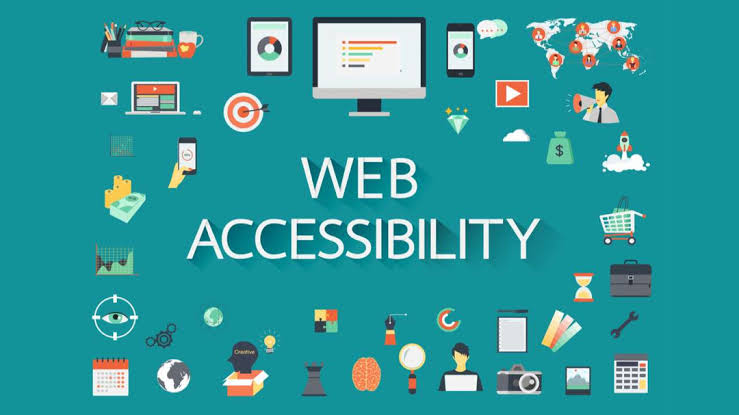Discover why accessibility in website design is essential for reaching a wider audience and improving user experience. Learn about the benefits of accessible design, including legal compliance, enhanced SEO, and ethical responsibility. Explore practical strategies for creating an inclusive website that accommodates users with various abilities.
The Significance of Accessibility in Web Design
Introduction
In todays era where websites play a role in providing information, services and conducting business ensuring accessibility has become a key consideration in web design. Making a website accessible means that individuals with abilities and disabilities can use it comfortably. This article delves into the significance of accessibility in web design its advantages and practical approaches to creating an inclusive online environment.
Grasping the Concept of Accessibility in Web Design
Accessibility in web design involves creating content that is usable by people regardless of their cognitive capabilities. This encompasses individuals who rely on technologies like screen readers or voice recognition software as well as those with impairments, such as vision, hearing, motor skills or cognitive functions. Designing websites ensures that users can easily navigate comprehend and engage with the content.
Benefits of Accessible Website Design
1. **Wider Audience Reach**: When creating websites that prioritize accessibility you open up your content to a audience. This approach not addresses ethical considerations but also makes sound business sense. A broader audience can result in traffic increased engagement and potentially higher conversion rates.
2. **Enhanced User Experience**: Accessibility features generally improve the experience for all users not just those with disabilities. For instance user friendly navigation, readable fonts and well organized content can make websites more user friendly and enjoyable for everyone.
3. **Search Engine Optimization (SEO)**: Many accessibility guidelines align with SEO practices. For example using descriptive alt text for images and structuring content with HTML tags can boost search engine rankings. This means that incorporating design can also enhance visibility in search engine results.
4. **Adhering to Laws** Many nations have laws, in place that mandate websites to be accessible for people with disabilities. For instance the Americans with Disabilities Act (ADA) in the United States requires public websites to be accessible. Following these guidelines helps mitigate legal risks and the possibility of lawsuits.
5. **Moral Obligation** Advocating for accessibility aligns with a commitment to responsibility and fairness. By developing an inclusive website you contribute to a more just digital space and show consideration for all users.
Important Factors to Consider in Web Development
1. **Visual Layout** Ensure your website is user friendly for individuals with impairments. This involves using contrasting color schemes to enhance readability and offering text descriptions for images through alt text. Additionally think about incorporating fonts and making sure that color alone is not used to convey information.
2. **Keyboard Navigation**: Some users prefer using the keyboard over a mouse. Make sure your website is designed so that all interactive features like forms, buttons and links can be accessed using the keyboard. Adding indicators helps users keep track of their location on the page.
3. **Screen Reader Compatibility**: People with impairments rely on readers to have website content read aloud. Ensure your website is compatible with readers by using HTML, providing descriptive link text and avoiding the use of images as the means of conveying information.
4. **Form Accessibility**: Forms are crucial for websites but can pose challenges for users with disabilities. Clearly label each form field and ensure that error messages are descriptive and helpful. Use controls and offer clear instructions for filling out forms.
5. **Multimedia Content**: Offer formats for multimedia content such as captions for videos and transcripts for audio. This ensures that users with hearing impairments can access and comprehend information.
6. **Flexible Layout**: A flexible layout guarantees that your site functions properly on devices such, as smartphones and tablets. This strategy is advantageous for users, including those with motor disabilities who find it difficult to use standard desktop setups.
7. **Evaluation and Input**. Consistently assess your websites accessibility and gather input from users with disabilities. While tools and automated testing methods can detect issues user feedback is crucial for comprehending everyday accessibility obstacles and enhancing the design accordingly.
Implementing Accessibility Best Practices
To ensure that best practices are followed in your projects it's essential to integrate accessibility into your design and development processes right from the start. This means educating your team about standards like the Web Content Accessibility Guidelines (WCAG) and applying design principles consistently throughout the project. Furthermore it's a good idea to conduct accessibility assessments to pinpoint and resolve any potential issues. You can do these audits by using tools or through testing with technologies.
Conclusion
The significance of incorporating accessibility into website design is paramount. Developing an accessible site improves the experience for users broadens your reach and ensures adherence to regulations. By prioritizing accessibility you showcase a dedication to inclusivity and fairness fostering a digital environment. With the progression of web design integrating accessibility at every phase of the design process will guarantee that your website stays user friendly, captivating and welcoming to all.
